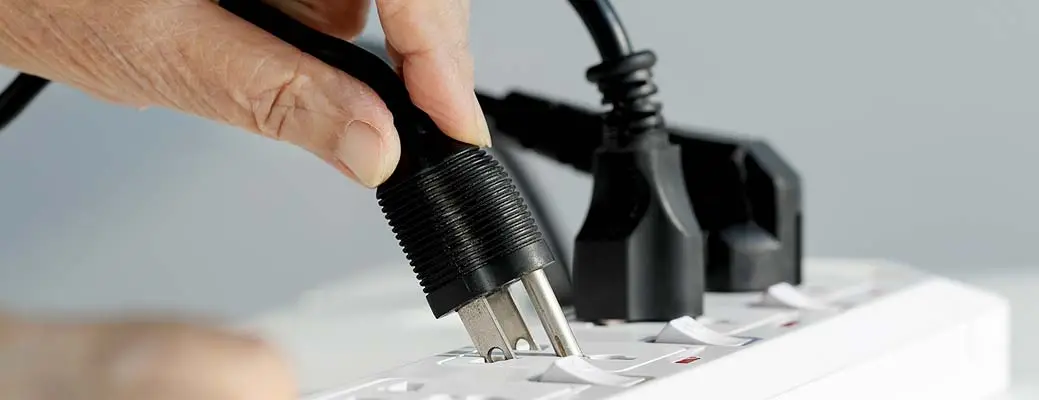How to Protect Your Home From Power Surge Damage


Most people associate power surges with thunderstorms and lightning strikes. But power can actually surge in your home 20 times a day, on average. With all of that electricity running through your house, it’s important to find ways to protect your devices from power surge damage.
Homes typically have 120-volt power outlets, but the actual amount of power oscillates between 0 and 169 volts. In a power surge, voltage exceeds 169 — shorting and eventually ruining your home electronics.
Power surges can be caused by a blown transformer or a very close lightning strike. However, it doesn’t need to be storming for your home to experience a power surge.
More often, electricity in your home will surge when an appliance cycles or turns off. Think: when your air conditioner completes a cycle, your washing machine finishes a load, or your stove is turned off after being on. These appliances were using a lot of power during their “on” cycle, so when they turn off, the rest of your home experiences a temporary surge.
During a power surge in your home, the voltage coursing through your home (and the devices plugged into your outlets) will increase. If your devices are unprotected, they could burn out or fry over time. Why? The extra current generates more heat than your appliances are meant to handle. A single incident can cause appliances or electronics to go out, like the electricity blinking on after a power outage, but often it will happen over a longer time period.
This step is quick and easy. Protect your most sensitive electronics — like computers, laptops, TVs and phones — from power surges by plugging them into power strips with surge protectors. (But don’t assume your power strips offer this protection; you should always check!) You can also set up surge stations for phone and cable lines. Another option is to work with an electrician to install an uninterruptible power station, which creates a stable supply of electricity.
Your electrician can install a surge protection system that is connected to the service panel. These whole-home surge protectors act as a gateway for electrical current and prevent sudden surges. If too much power surges into your house, a surge protection system will divert the additional current to a ground wire.
Every room in your home is on its own breaker system. When you set up your rooms, anticipate about how much power each item will draw, and take care to plug in appliances that will draw a lot of power into different outlets on a different breaker. For example, your refrigerator, oven/stove and dishwasher should all be plugged into different outlets, and each on a separate breaker. Sound complicated? It can be — consult an electrician to optimize electrical use throughout your home to prevent power surge damage.
Power surges can wreak havoc on your appliances and devices. But you can protect everything that plugs into the wall with Residential Equipment Breakdown coverage. For as little as the cost of a cup of coffee, you can protect your electrical devices. This add-on coverage covers the replacement cost of anything damaged by a power surge. Talk to your local Farm Bureau agent to protect your home, and everything inside.